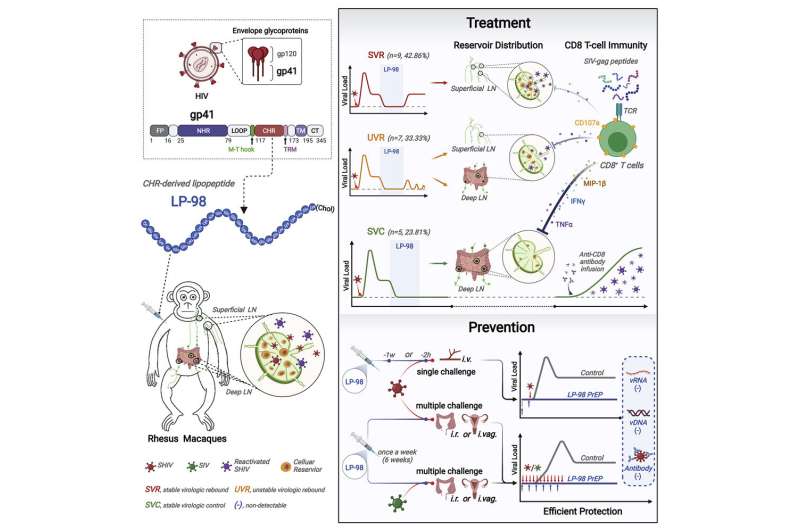December 23, 2021 report
A fatty designer molecule shows promise as an HIV treatment

A team of researchers at the Chinese Academy of Medical Science has found that a fatty molecule they created worked effectively against a monkey version of HIV. In their paper published in the journal Cell, the group describes developing the molecule and how well it worked when tested in rhesus macaques.
HIV and AIDS were first diagnosed in humans in the 1980s, when it was still deadly. Over the past several decades, medical scientists have learned more about the disease and the virus behind it and have developed a host of therapies to treat infected people. Currently, existing treatments drastically reduce the HIV viral load in infected people, but because of the virus's latent reservoirs, therapies cannot wipe it out entirely. Thus, patients must take drugs for the rest of their lives to remain healthy. In this new effort, the researchers have developed a fatty molecule that might one day relieve patients from medication regimens.
To create the fatty molecule, the researchers combined cholesterol, a very well-known type of fat, with amino acids to create a new molecule called LP-98, which is a type of lipopeptide-based fusion inhibitor. Suspecting it might work against the HIV virus, the researchers gave it to several rhesus macaques that were infected with the simian immunodeficiency virus (SIV), a virus quite similar to the HIV virus.
In their tests, the researchers found that giving quantities of the molecule to the monkeys prior to exposure to the SIV prevented infections from taking hold. They also found it prevented hybrid infections (HIV mixed with SIV). And, they found that giving it to 21 monkeys that were already infected reduced their viral load to a point that the virus could no longer be detected—and the protection persisted to different degrees even after the researchers ceased giving the treatment to the monkeys—20 percent of the monkeys reached a stable state, suggesting they were free of the virus; 40 percent showed a stable viral rebound; and 30 percent had an unstable viral rebound. The team plans to continue their work to see if their numbers can be improved, and also to find out how well their molecule works in human patients.
More information: Jing Xue et al, Efficient treatment and pre-exposure prophylaxis in rhesus macaques by an HIV fusion-inhibitory lipopeptide, Cell (2021). DOI: 10.1016/j.cell.2021.11.032
© 2021 Science X Network



















